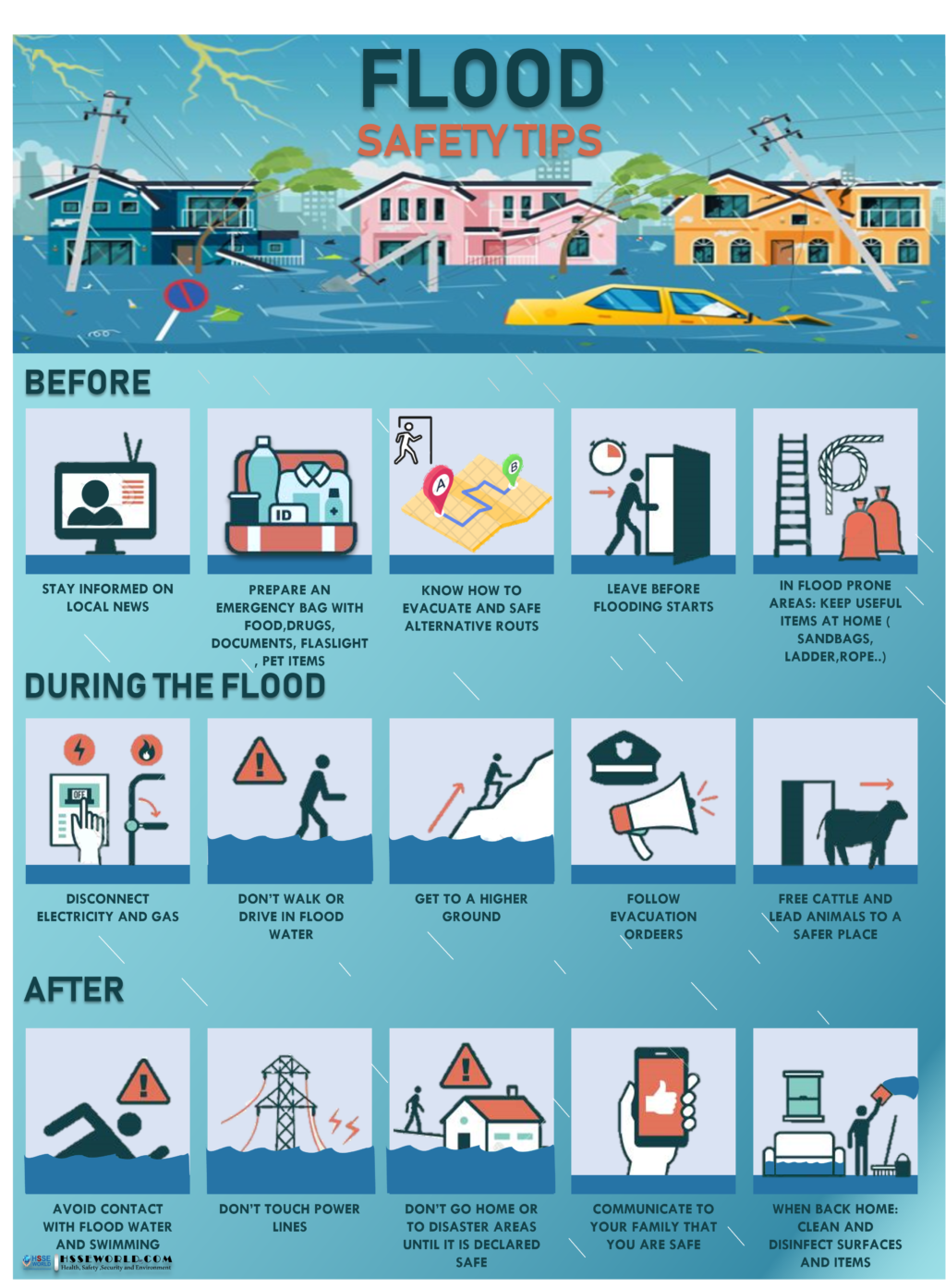Flash Flood Safety: A Guide To Understanding And Responding To Flood Alerts

Table of Contents
Understanding Flash Flood Risks
What are Flash Floods?
Flash floods are a sudden, rapid flooding of normally dry areas in a short period, often within six hours of the causative event. Unlike regular floods, which develop gradually over days or weeks, flash floods are characterized by their speed of onset, intensity, and short duration. This rapid inundation makes them particularly dangerous, leaving little time for evacuation or preparation. Common causes include intense or prolonged rainfall, dam or levee failures, and sudden releases of water from melting snow or ice. Areas prone to flash flooding include mountainous regions, arid lands experiencing sudden downpours, and urban areas with inadequate drainage systems.
Identifying Flash Flood Warning Signs
Recognizing the warning signs of a flash flood is the first step to ensuring your safety. Be vigilant and look out for the following:
- Rising water levels: Observe rivers, streams, and creeks for a rapid increase in water levels.
- Rapidly flowing water: Water flowing swiftly in normally dry areas is a major red flag.
- Mud and debris: The presence of mud and debris in the water indicates increased flow and potential danger.
- Swollen waterways: Streams or rivers overflowing their banks are clear indicators of imminent flooding.
- Water covering roads: Flooded roads are extremely dangerous and should be avoided at all costs.
- Intense rainfall: A sudden and significant increase in rainfall intensity warrants immediate attention.
- Official warnings: Pay close attention to weather reports, local news, and official flood warnings issued by emergency services.
Preparing for Flash Floods
Creating a Family Emergency Plan
A well-defined family emergency plan is vital for flash flood safety. This plan should include:
- Communication plan: Designate a meeting point outside your home and ensure everyone has readily available contact information.
- Evacuation routes: Identify multiple escape routes from your home and workplace, considering potential road closures.
- Emergency kit: Prepare a kit containing essential supplies such as water, non-perishable food, a first-aid kit, medications, flashlights, batteries, and a portable radio.
- Community warning system: Familiarize yourself with your community's warning system, including sirens, mobile alerts, and social media channels used for emergency broadcasts.
Protecting Your Property
Protecting your property can mitigate potential damage from flash floods. Consider these preventative measures:
- Elevate valuables: Move important documents, electronics, and other valuable items to higher ground.
- Clear drains and gutters: Regularly clean drains and gutters to prevent water buildup around your home.
- Install flood barriers: Sandbags or commercial flood barriers can help protect entrances and vulnerable areas.
- Reinforce structures: Strengthen weak points in your home's structure, such as foundations and walls.
Responding to Flash Flood Warnings
Evacuating Safely
When a flash flood warning is issued, immediate evacuation is crucial. Follow these steps:
- Obey orders: Heed all official evacuation orders promptly and without delay.
- Move to higher ground: Evacuate to a designated safe zone or higher ground, avoiding flooded areas.
- Secure your home: Turn off utilities, lock doors and windows, and take any other necessary precautions.
- Move vehicles: Relocate vehicles to higher ground to prevent damage.
- Follow routes: Use designated evacuation routes to avoid hazards.
Staying Safe During a Flash Flood
If caught in a flash flood, prioritize your safety:
- Avoid contact with floodwater: Floodwater is often contaminated with dangerous debris, chemicals, and bacteria.
- Never drive through floodwaters: Even shallow water can sweep your car away.
- Stay informed: Continuously monitor weather updates and emergency broadcasts.
- Seek higher ground: Find safe shelter on higher ground if caught in a flash flood.
- Listen to broadcasts: Pay attention to emergency instructions and guidance.
Conclusion
Flash flood safety is paramount for protecting yourself and your community. By understanding the risks, preparing in advance, and responding effectively to warnings, you can significantly reduce your vulnerability to flash floods. Remember to develop a comprehensive flash flood safety plan, including an evacuation strategy and emergency kit, and always heed official warnings. Stay informed about the latest flash flood alerts and ensure your family is prepared for any eventuality. Proactive flash flood safety measures can save lives and minimize damage. Don't wait until it's too late; create your flash flood safety plan today!

Featured Posts
-
 Geriden Gelen Atletico Madrid Basari Oeykuesue
May 25, 2025
Geriden Gelen Atletico Madrid Basari Oeykuesue
May 25, 2025 -
 Dreyfus Affair Posthumous Promotion Proposed By French Parliament
May 25, 2025
Dreyfus Affair Posthumous Promotion Proposed By French Parliament
May 25, 2025 -
 Alcaraz And Sabalenka Triumphant In Italian Open Debut
May 25, 2025
Alcaraz And Sabalenka Triumphant In Italian Open Debut
May 25, 2025 -
 Mia Farrow Demands Trump Be Jailed For Deporting Venezuelan Gang Members
May 25, 2025
Mia Farrow Demands Trump Be Jailed For Deporting Venezuelan Gang Members
May 25, 2025 -
 Pilbaras Future Rio Tinto Responds To Forrests Criticism
May 25, 2025
Pilbaras Future Rio Tinto Responds To Forrests Criticism
May 25, 2025
